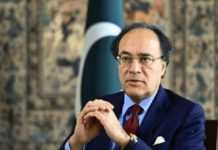
KARACHI: The Sindh government has, for the first time, compiled data on private schools in the province, showing that several educational institutes have yet to provide basic facilities to students.
The report, compiled by the Directorate of Inspection and Registration of Private Institutions Sindh, after directions from Sindh Education Minister Sardar Shah was obtained by Geo News Wednesday.
In the report, it was revealed that the province has 12,809 private schools of which 1,073 are closed and 11,736 are functional.
Breaking down the data of the functional schools, the report mentioned that 11,387 have co-education (where girls and boys study together), 175 are restricted to females, and 174 only enroll male students.
Also among the educational facilities, 474 are schools+madrassas, 31 are madrassas, and 11,231 are schools.
As many as 91.82% (10,776) are English medium schools, 3.99% (469) are Urdu medium, and 4.18% (491) are Sindhi medium.
Schools with no basic facilities
It is widely believed that private institutions provide better facilities to students as compared to public schools but the census reveals a different picture altogether where a number of educational centres lack basic amenities.
According to data, about 3,948 schools do not have internet facility while 4,275 don’t have computer labs.
The report further mentioned that out of 11,736 functional schools in the province, 4,464 lack science labs, and 4,433 of them don’t have libraries.
Similarly, the census revealed that 2,204 schools don’t have office computers for their staffers while 6,110 of them are operating without multipurpose halls, 1,782 without UPS/electricity generators and 1,230 without staff rooms.
The data highlighted that hundreds of schools lack very basic facilities and it is beyond imagination how are they allowed to function by the concerned authorities.
It is shocking to know that students in 187 private institutions are studying without having the facility of drinking water, 146 don’t have toilets and 350 of them are operating without an electricity connection.
As per the data, 4,889 schools don’t have playgrounds while 627 institutes are functioning without boundary walls.
Enrolment
Boys have outnumbered girls in terms of enrolment, as 54.22% (more than 2.1 million) of the total children are male and 45.77% (more than 1.8 million) are female.
From them, 4.22% (166,632) are enrolled in pre-nursery, 8.03% (316,627) in nursery, 10.36% (408,521) in Prep/KG, 9.71% (355,562) in class-1, 9.01% (355,562) in class-2 and 8.52% (336,113) in class-3.
As many as 8.1% (319,491) are enrolled in class-4, 7.69%( 303,489) in class-5, 7.3% (288,146) in class-6, 6.77% (267,043) in class-7, and 6.52% (257,363) in class-8.
The data showed that 5.62% (221,668) are enrolled in class-9, 5.45% (214,964) in class-10, 0.66% (26,136) in class-11, and 0.54% (21,497) in class-12.
Moreover, 0.29% (11,748) are enrolled in O’levels Prep, 0.3% (11,850) in O’levels Stage-1, 0.27% (10,989) in O’levels Stage-2, (10,989) in A’levels Stage-1, and 0.25% (10,170) A’levels Stage-2.
A total of 166,788 students belonging to minorities are also enrolled in these educational facilities — 57% (95,199) are boys and 43% (71,589) are girls.
Teachers and facilities
For thousands of schools, there’s a total of 298,938 staff — 75.31% (225,158) teaching staff and 24.68% (73,780) non-teaching staff.
Female teachers outnumber their male counterparts as the former constitute 76.13% of the total teaching staff and males comprise only 23.86%.
When it comes to facilities, 11,109 schools have boundary walls, 11,590 toilets, 11,386 electricity, 11,549 drinking water, and 6,847 playgrounds.
As many as 10,506 have staff rooms, 9,954 UPS or generators, 5,626 multi-purpose halls, 9,532 office computers, 7,461 computer labs, 7,272 science labs, 7,303 libraries, and 7,788 schools provide internet facilities to pupils.











